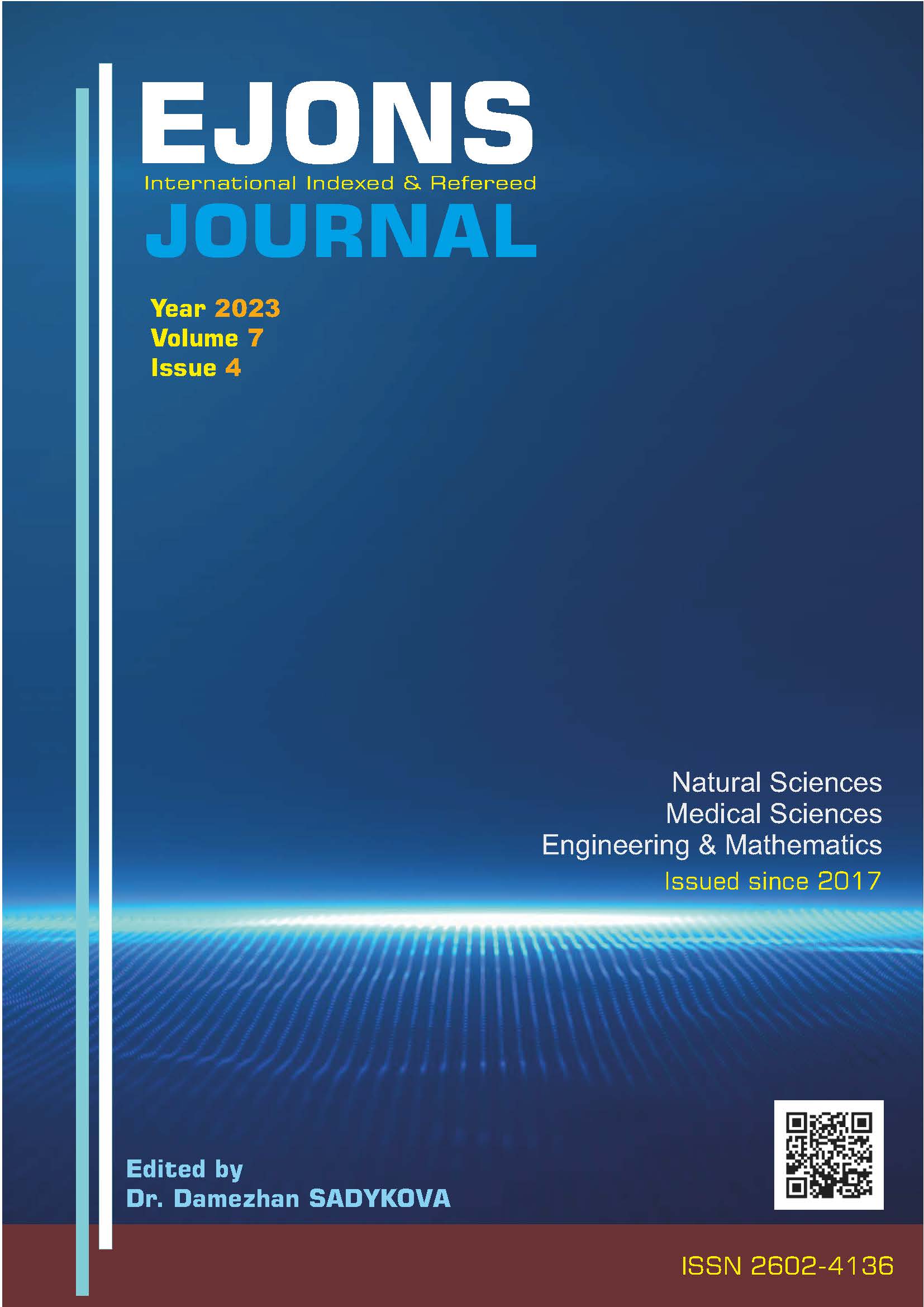Türkiye’nin Sıcak İklim Koşullarında Kaz Yetiştiriciliği: Diyarbakır İli Örneği
DOI:
https://doi.org/10.5281/zenodo.10487537Keywords:
Hot climate, Diyarbakır climate, heat stress, goose breeding, Diyarbakır province.Abstract
Abstract: One of the biggest problems encountered in poultry farming is heat stress. Diyarbakır province stands out as one of the hottest provinces in Turkey, especially in the summer months. Geese are generally known as poultry that adapt to cold weather conditions, and production is concentrated in these areas. Contrary to popular belief, geese can also adapt to hot and dry climates. Having a ventilation system in the shelters where the animals are kept, keeping the stocking density at optimum (m2/3.5 goose), and adding vitamin mixtures to the diets can contribute to high reproductive performance and also reduce heat stress. This study aims to provide information about the place of Diyarbakır province, which has a hot climate, in goose breeding, the precautions that can be taken against heat, and the measures to be taken to improve goose breeding in the province.
Key words: Hot climate, Diyarbakır climate, heat stress, goose breeding, Diyarbakır province.
References
Akın, Y., Çelen, M.F. (2020). Ege Bölgesinde kaz yetiştiriciliği ve bölge mutfak kültüründe kazların önemi, Uşak Üniversitesi Fen ve Doğa Bilimleri Dergisi, 4(1),28-39.
Akın, Y. (2023). General situation, problems and suggested solutions for goose breeding in Kütahya province. Black See Journal of Agriculture, 6(3), 295-303. DOI: 10.47115/bsagriculture.1278772
Anonim, (2019). Diyarbakır İli 2018 yılı çevre durum raporu. Diyarbakır Çevre ve Şehircilik İl Müdürlüğü, https://webdosya.csb.gov.tr/db/ced/icerikler/d-yarbak-r_-cdr2018-20190906171616.pdf (Son Erişim Tarihi: 15.10.2023)
Arslan, A., & Duru, M. (2004). Kanatlılarda sıcaklık stresinin yönetilmesinde besleme açısından alınacak önlemler. MKU Ziraat Fakültesi Dergisi 9(1-2): 93-100.
Bará, M. R. (2008). Use of vitamin C in the management of summer infertility. Paper presented at: The 20th International Pig Veterinary Society Congress; Durban, South Africa
Boz MA, Sarıca M, Yamak US. (2014). Yozgat ilinde kaz yetiştiriciliği. Tavukçuluk Araş Derg, 11(1): 16-20.
Boz, M.A., (2015). Determining the growth, slaughter and carcass traits of natural and artificial incubated geese in intensive conditions. PhD thesis, Ondokuz Mayıs University, Institute of Sciences, Animal Science, Samsun, Turkey
Ewuola, E. O., Akinbola, E. T., Oyewale, J., & Ogundele, A. (2023). Assessment of the reproductive performance of wallowed and non-wallowed geese at high temperature humidity index during breeding season. Bulgarian Journal of Animal Husbandry/Životnov Dni Nauki, 60(1).
Kaya, Z. & Yurtseven, S., (2019). General information about goose breeding in Şanliurfa conditions. 1st İnternational Gobeklitepe Agriculture Congress. Şanlıurfa, Turkey. 25-27 November 2019.
Kaya, Z. & Yurtseven, S., (2021). Effects of feeding systems on yield and performance of Linda geese (Anserinae sp.) in hot climatic conditions. South African Journal of Animal Science 51(5), 628-634. DOI: 10.4314/sajas.v51i5.9
Lesson, S., (1986). Isı Stresi Altındaki Kümes Hayvanlarının Beslenmeleri. Roche- Damla, No:10.
Liu, H.W. & Zhou. D.W., (2013). Influence of pasture intake on meat quality, lipid oxidation, and fatty acid composition of geese. J. Anim. Sci. 91,764-771. DOI: 10.2527/jas.2012-5854.
Mancinelli, A.C., Mattioli, S., Dal Bosco, A., Piottoli, L., Ranucci, D., Branciari, R., Cotozzolo, E. & Castellini, C. (2018). Rearing Romagnola geese in vineyard: Pasture and antioxidant intake,nperformance, carcass and meat quality. Italian J. Anim. Sci. 18,372-380. DOI: 10.1080/1828051X.2018.1530960.
Maurya, V. P., Naqvi, S. M. K., & Mittal, J. P. (2004). Effect of dietary energy level on physiological responses and reproductive performance of Malpura sheep in the hot semi-arid regions of India. Small ruminant research, 55(1-3), 117-122.
Minbay, A., (2002). Kanatlı hayvanların Sağlığını Koruma ve Hastalıklarla Savaşta Uygulanan Ana Prensipler. (ed. M. İzgür, M. Akan) Kanatlı Hayvan Hastalıkları. Medisan Yayınları, 1. Baskı, 3: 19-36, Ankara, 444 s.
MGM (2023a). Diyarbakır iklimi. https://www.mgm.gov.tr/FILES/genel/kitaplar/diyarbakiriklimi.pdf (Son Erişim Tarihi: 10.10.2023)
MGM (2023b). Diyarbakır ili aylara göre sıcaklık değerleri. https://www.mgm.gov.tr/veridegerlendirme/il-ve-ilceler-istatistik.aspx?k=undefined&m=DIYARBAKIR (Son Erişim Tarihi: 10.10.2023)
MGM (2023c). 2022-2023 Su Yılı 12 Aylık Alansal Kümülatif Yağış Raporu. https://www.mgm.gov.tr/veridegerlendirme/yagis-raporu.aspx?b=k#:~:text=T%C3%BCrkiye%20geneli%20su%20y%C4%B1l%C4%B1%20ya%C4%9F%C4%B1%C5%9F%C4%B1,g%C3%B6re%20%256%20azalma%20meydana%20gelmi%C5%9Ftir (Son Erişim Tarihi: 11.10.2023)
NRC, (1994). Nutrient requirements of Geese, p.40. In: Nutrient requirements of Poultry. NationalAcademy Press, Washington DC.
Pingel H. (2011). Waterfowl production for food security, Lohmann İnformation, 46(2),32-42.
Sarı, M., Buğdaycı, K.E., Akbaş, A.A., Saatcı, M. & Oğuz, M.N., (2019). The effect of laying period on egg quality traits and chemical composition of Lindovskaya (Linda) geese reared under breeder conditions. Turk. J. Vet. Anim. Sci. 43, 662-669
Shearer, J. K., Van Amstel, S. R., Benzaquen, M., & Shearer, L. C. (2006). Effect of season on claw disorders (including thin soles) in a large dairy in the southeastern region of the USA. In Proceedings of the 14th International Symposium on Lameness in Ruminants, Uruguay, November (pp. 8-11)
Sun, A. D., Shi, Z. D., Huang, Y. M., & Liang, S. D. (2007). Development of out-of-season laying in geese and its impact on the goose industry in Guangdong Province, China. World's Poultry Science Journal, 63(3), 481-490.
TUIK, (2023a). Hayvancılık İstatistikleri, Diğer Kümes Hayvanları Sayıları. https://biruni.tuik.gov.tr/medas/?locale=tr. (Son Erişim Tarihi: 18.10.2023).
TUIK, (2023b). Hayvansal Üretim İstatistikleri, 2022. URL: https://data.tuik.gov.tr/Bulten/Index?p=Hayvansal-Uretim-Istatistikleri-2022-49682. (Son Erişim Tarihi: 18.10.2023).
TUIK, (2023c). Hayvansal Üretim İstatistikleri, Diyarbakır İli ve İlçeleri. 2022. https://biruni.tuik.gov.tr/medas/?locale=tr (Son Erişim Tarihi: 18.10.2023)
Downloads
Published
How to Cite
Issue
Section
License
Copyright (c) 2023 EJONS INTERNATIONAL JOURNAL

This work is licensed under a Creative Commons Attribution-NonCommercial 4.0 International License.


